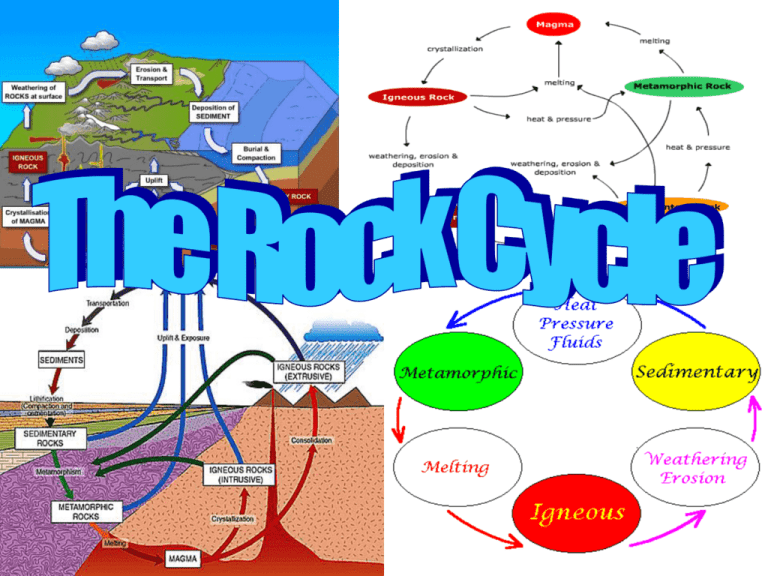Rock Cycle - Bakersfield College
advertisement

Lab Objectives: • Determine the meaning of the rock cycle and what conditions are necessary to form igneous, sedimentary, and metamorphic rocks • Identify the names of common rock forming processes and how textural/compositional characteristics are associated with the various geologic processes • Determine that the rock cycle is an open system that interacts with various other open systems within the geoshpere and how the rock cycle contributes to positive/negative feedback mechanisms • Infer how specific hand samples representing all three rock groups have formed in relation to the rock cycle The Rock Cycle The Rock Cycle: 7 • where the earth’s internal forces meet the earth’s external forces (at the earth’s surface) Earth’s internal forces VS. Earth’s external forces • moving continents (PT) • earthquakes • elevation of mountains • volcanic eruptions • the hydrosphere (HC) • atmosphere • erosion (wind, water, ice) • biosphere activities Produce a continuous cycle of rising mountains only to be weathered down and uplifted repeatedly. As a result, igneous sedimentary, and metamorphic rocks are created. Ocean to Continent Convergence A. convergence of plates D A B B. subduction of oceanic plate material C. oceanic plate melts and less dense magma C rises D. formation of composite volcanoes (explosive) on the continent Oregon / Washington Coast 33 An Important Aspect of Earth Science • The earth maintains balance between the open systems through positive and negative feedback mechanisms. Positive feedback works to change the system Negative feedback works to resist the change Working to change the system and working to resist the change maintains balance within the system. “PONDERING” How would you draw a relationship between positive/negative feedback mechanisms and the processes within the rock cycle Lab Exercise: • Complete Rock Identification • Complete Rock Cycle Lab • use your textbook • use available sources on the counter • use the Rock ID boxes (red boxes) • use your lecture notes




